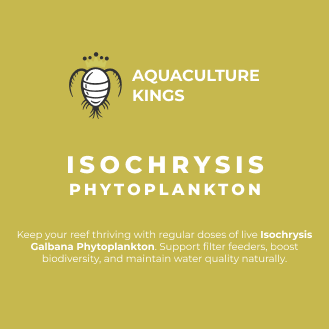Help, my culture keeps crashing!
Absolutely terrible feeling isn’t it, everything felt right but it never went anywhere!
Here at Aquaculture Kings, we’re all about sharing knowledge. Our mission is to improve the live foods industry so we’re more than happy to share what we’ve learned over the years.
If the below doesn’t help you, feel free to reach out to us on social media and we’ll help you troubleshoot!
Below are the most common reasons cultures crash, ranked from most to least common:
Phytoplankton Top Causes of Crashing
Salinity too high or too low
Some strains of phytoplankton are very particular about the salinities they can survive and thrive in. Ensure you have done your research on the strain you are culturing. If the salinity is too high, add RODI water in small amounts until the desired salinity has been reached. If it’s too low, pre-mix some high strength saltwater and add that in small amounts, checking the salinity in between until the desired salinity has been reached.Under feeding or Over feeding
While underfeeding simply leads the cells to starve and die, overfeeding can promote bacterial growth, nutrient imbalance, and pH instability. It’s important to follow the instructions clearly.Bad water source
Old or stagnant water - especially from uncirculated drums or sun-exposed containers - can be toxic. Use freshly mixed saltwater and avoid natural seawater unless sterilised.Temperature
Phytoplankton grows best around 24-27c, lower temperatures will negatively impact the cells ability to split, slowly leading them to their death, while too high will rapidly kill off the cells. The only suitable heater you should use is a reptile mat, never submerge electrical heaters or probes.Starter culture was already dead, or was already dying
Some strains have a very short shelf life, and all strains have telltale signs if they’re thriving, hungry, or dying based on colour. For example, healthy nanno is a nice dark green. As it begins to starve, it turns brownish, and once it’s dying, there’s no trace of green left.Contaminated air source
Your air pump should be in an isolated area. Ideally, the air should be filtered, or placed near an air purifier. Any unidentified airborne particles like bug spray or air freshener can contaminate your culture.Stale Fertiliser
Fertiliser (Gulliards F/2) should be refrigerated immediately after every use to prevent any bacterial growth, if left unrefrigerated the nutrients within will begin to clump together and foul the fertiliser.
Give it another shot, here’s a dose of high-purity phytoplankton that won’t let you down (provided you’ve mastered the above points, of course)
Zooplankton Top Causes of Crashing
This includes all the little creatures such as: Copepods, Rotifers, Ciliates etc
Ammonia build up
Yep, these guys really can produce enough ammonia to knock out a culture. We’re pretty strict over here so we always test our cultures no matter how confident we are. Weekly harvesting, even if you don’t need to, is extremely important, you should aim to replace at least 50% of the water to remove waste and keep your zoo healthy.Salinity
If the salinity is too high, add RODI water in small amounts until the desired salinity has been reached. If it’s too low, pre-mix some high strength saltwater and add that in small amounts, checking the salinity in between until the desired salinity has been reached.Overfeeding or Underfeeding
Overfeeding isn’t always a bad thing provided you maintain your cultures on a weekly basis with water changes. Underfeeding will obviously devastatingly impact reproduction rates, and lead them to their deaths. Look at your cultures daily, if the water is perfectly clear, the likelihood that they’re starving is high. We of course recommend our Ultramix Phytoplankton for feeding, we use the exact same formula in our own zoo cultures.Bad water source
Old or stagnant water - especially from uncirculated drums or sun-exposed containers - can be toxic. Use freshly mixed saltwater and avoid natural seawater unless sterilised.Temperature
Typically you should aim for a stable temperature of 25c, while most zooplankton are fine within the ranges of 20-29c it’s worth noting that reproduction rates significantly decrease the colder it gets, and increase the warmer it gets, warmer temps promote bacterial growth however.
Don’t give up, we’ll help you start again as we have all the little creatures you need:







